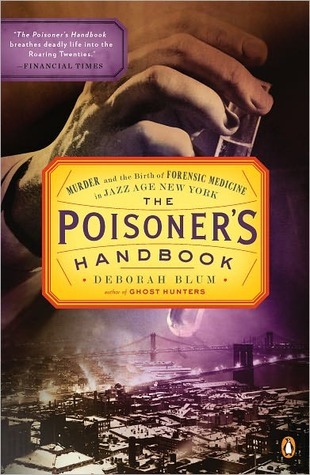More on this book
Community
Kindle Notes & Highlights
by
Deborah Blum
Read between
July 1 - July 8, 2020
An invalid would slide away into chloroform-induced unconsciousness and just keep sliding. The breathing would sputter to bare gasps; the heartbeats would decrease in an ever-slowing rhythm. Alarmed doctors began tallying the deaths. On average, it seemed, chloroform anesthesia killed at least one in every three thousand patients.
The city required no medical background or training for coroners, even though they were charged with determining cause of death. The list of New York City coroners, from 1898 to 1915, included eight undertakers, seven politicians, six real estate dealers, two saloonkeepers, two plumbers, a lawyer, a printer, an auctioneer, a wood carver, a carpenter, a painter, a butcher, a marble cutter, a milkman, an insurance agent, a labor leader, and a musician.
The new mayor didn’t care for being pushed around by a bunch of outsiders. He decided to show his critics who was boss by punishing the overqualified applicants. The mayor’s office announced that by taking the required examination, all three of those applicants had engaged in criminal behavior. The reasoning went thus: the doctors had been required to perform autopsies as part of the examination. But state law specified that unclaimed bodies were to go to medical schools for teaching purposes. Since the job applicants had prevented that process, the mayor said, he was directing the civil
...more
When a person inhales oxygen, the gas diffuses out of the lungs and into the bloodstream. Then because oxygen molecules are so attracted to iron, they bond to the hemoglobin. The result is called oxyhemoglobin, and in that neat package, the life-sustaining gas is delivered to cells throughout the body. It seems a beautifully designed system. But a chemical vulnerability is built into it, which becomes very apparent with exposure to a poison such as cyanide or carbon monoxide. Both poisons attach to hemoglobin far more effectively than oxygen. Thus, these two chemical compounds are
...more
In early 1930 the Metropolitan Life Insurance Company reported that deaths due to alcoholism were now 600 percent higher (among its 19 million policyholders) than those tallied in 1920, the first year that consumption of alcohol was prohibited. These statistics suggested that Prohibition had fostered a nation of heavy drinkers and that the habit was killing thousands of people.
By the end of the 1920s, researchers knew that tobacco smoke contained more than nicotine and carbon monoxide. They’d also found cyanide, hydrogen sulfide, formaldehyde, ammonia, and pyridine, the latter a component in industrial solvents. A few doctors had also charted the chronic ill effects—sore throats and coughs, bronchitis, and heart and circulation problems, from rapid pulse to blocked arteries. Some even suspected that the chemistry of cigarette smoke might be linked to cancer, although that idea had plenty of skeptics.


